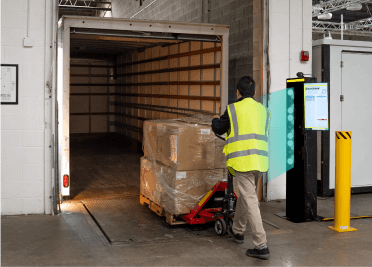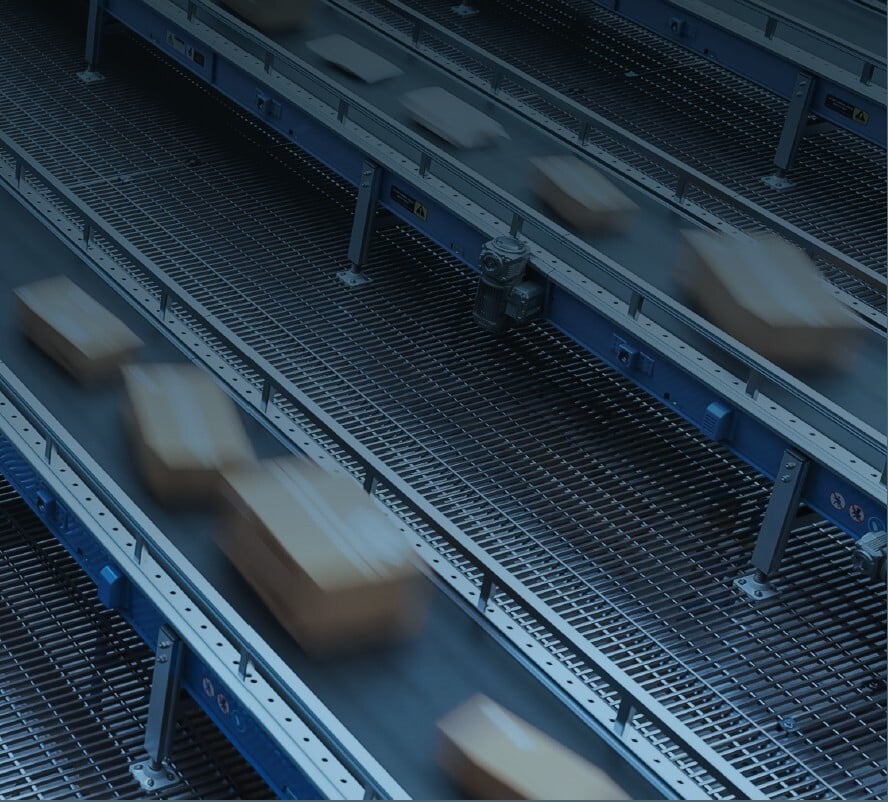Warehouse modernization has been a key theme of formal industry presentations and casual conversations with customers for years now. Warehouse operations of all sizes have been under immense pressure to keep up with both consumer and commercial customers’ customization expectations and growing need for speed ever since omnichannel sales models emerged a decade ago.
In just 10 years:
- The average number of SKUs managed by a single warehouse has grown significantly due to the diversification of inventory assortment. Many warehouse operations are simultaneously juggling distribution and fulfillment due to dramatic shifts in expectations in both B2B and B2C supply chains.
- Order volumes have multiplied significantly across all commerce channels, as have item-level fulfillment levels. In many cases this has caused businesses to rethink their operations to shift from primarily store replenishment to both replenishment and individual order processing.
- In some segments, the inventory relevance period has shortened, creating an urgency to increase turnover rates and making it more challenging to move inventory that is quickly becoming “obsolete” due to declining demand or the availability of newer-generation versions.
- The “acceptable” order turnaround time has dropped from 1-2 weeks to 1-2 days (or, in some cases, hours).
- The labor pool has shrunk, forcing workers to work smarter and more efficiently in order to keep up with demand. It has also driven up the cost of labor.
- Time has become a luxury when it comes to training. With turnover rates at ~30%+ annually in some operational areas and so many seasonal peaks throughout the year, taking an average of 4.5 weeks to get workers to full productivity is not possible when you need to stay agile.
Then, in just 10 weeks, the market fluctuated to extremes not seen in 100 years. The COVID-19 outbreak forced warehouse operators and their supply chain partners to suddenly…
- Redefine demand profiles.
- Reconsider sourcing strategies and channels.
- Modify product mixes at unprecedented frequencies. (Right now, every item is a new item. Distributors have to constantly assess inventory velocity and re-slot according to current demand on a near-daily basis.)
- Adjust availability timelines and actually lengthen lead times.
- Expand the size of their workforces without compromising worker safety amid new social distancing and sanitization policies.
- Re-think how they plan and execute supply chain operations moving forward as uncertainty persists.
Though change has been inevitable for a while in the warehousing sector, the far-reaching (and presumably long-term) impacts of the COVID-19 outbreak are forcing manufacturers, retailers, DC operators and logistics companies to take immediate action to adapt.
The challenge is that many businesses have been operating the same way – using the same systems and processes – for decades. Sure, there have been incremental investments in new technologies over the years. However, previous modernization efforts have been highly siloed and mostly reactionary. Many of the piecemealed hardware and software platforms that warehouse operators rely on today aren’t capable of scaling to meet tomorrow’s demands. This makes the evolution path for legacy systems both risky and costly.
Overhauling processes and systems that have been in place for decades isn’t going to happen overnight, especially given the complexity of today’s supply chains. When modernizing, it’s important to start with the macro view of the bigger supply chain and then begin to drill down. Using this representative model, think about all that’s involved in getting a single product from production to the end user and the integral part of warehousing:
Yet, modernization must be accelerated in order to create a more scalable operational and sustainable growth models – to ensure that warehouse operators are equipped to adapt to a sudden and significant tidal shift such as the one caused by the COVID-19 pandemic.
The good news is that meaningful changes can be made faster than many might believe.
WHERE DO WAREHOUSE OPERATORS GO FROM HERE? IT DEPENDS ON WHERE THEY ARE IN THE WAREHOUSE MATURITY MODEL
Over the next several months, we are going to guide you through Zebra’s five-phase framework for strategically accelerating warehouse modernization plans. This framework takes into consideration the synchronization that needs to occur between warehouse management systems, automation and worker and workflow optimization. Each phase helps operations and information technology leaders purposefully increase the sophistication of their technologies to achieve greater levels of visibility, utilize their data to a greater extent and orchestrate operations wall-to-wall to ensure every asset and worker is visible, connected and fully optimized.
As you can see from the above image, warehouse modernization can be broken down into manageable pieces and guided by a strategic framework, rather than driven by the newest product or trend in the marketplace. It helps to look at the bigger picture and longer-term goals—providing a roadmap of sorts on how to get there.
Simply upgrading the warehouse management system (WMS), giving workers more (or better) technology and selectively optimizing workflows will prove insufficient in boosting efficiency, productivity and profitability in the long-term, even if smaller short-term gains are achieved.
In order to reach full maturation – defined by the ability to fully sense, analyze and act on data to unlock opportunities for productivity, accuracy and efficiency and overcome the challenges within your operations – you must think holistically about your end goals. Which of these issues are currently preventing you from achieving expected key performance indicators?
- Isolated systems and visibility gaps
- Labor shortages and more volume
- Disconnected workers and workflows
- Bottlenecks and asset inventory blind spots
- Rising workflow complexity
- Errors and non-compliance
WAREHOUSE MATURITY MODEL PHASE ONE: IMPROVE OPERATIONS AND INCREASE INDIVIDUAL WORKER PRODUCTIVITY
Building a more sustainable and scalable warehouse operation – one that will benefit you for years to come – is much like building a house. Though you may already be selecting the finishes while the blueprint is being drawn up, your immediate focus really needs to be on your foundational elements. If you take shortcuts during these early development steps, then other parts of the structure will eventually fail (and cost) you.
For example, your team might come to you and say…
- “Siloed workers and workflows challenge our productivity”
- “Slow, error-prone processes leave us missing deadlines and KPIs”
- “Inconsistent or faulty barcode scanning is leading to inaccuracy and loss of productivity”
- “Key entry and green screens are compounding our inefficiencies”
- "We need a way to capture all of our inventory processes”
- "Unavailable or unapplied security patches expose our organization to security risk”
- “Staging and deployment of devices are time-consuming”
Failing to address any one of these issues for the sake of more dramatic innovation could diminish your return on investment (ROI) for new technologies and the resources spent on other business process improvements. Remember, warehousing processes are highly interdependent on one another – and supply chain processes are highly dependent on fulfillment efficiencies. Just one “small” issue in receiving could have quite a significant ripple effect in picking, sorting, packing, shipping and delivery actions, particularly as order dynamics continue to change.
Therefore, it is recommended that you invite multiple stakeholders to the table when you first start your modernization efforts to collaboratively…
- Think about potential workflows and use cases for various technologies.
- Consider what the right mobility strategy can help your organization achieve.
- Examine your current data capture capabilities for efficiencies.
- Initiate platforming for simplicity to reduce managing and training on multiple operating systems (OS). There are so many benefits to having common OS for your mobile devices, including a single OS to manage for mobile computing, a single OS for printing (stationary and mobile) and scanning devices that offer varied scanning ranges but the same scanning productivity tools across them all.
- Define and implement the tools that IT will need to support operational demands.
- Put security at the forefront of all decisions – to identify potential points of vulnerability and put an action plan in place before the first new device or system is powered on.
Doing so will ensure that you don’t overlook any opportunity for improvement and help to secure advocates for your modernization strategy. It will also ensure that you don’t overcomplicate your efforts.
Something that Tony Reynolds of Reynold’s, Waltham Cross, Hertfordshire said in this Life of a Tomato Video Case Study was:
“Forklift truck drivers have the ability to scan barcodes from a distance … It all sounds a very simple thing, but if you can prevent a lift truck driver from getting on and off these lift trucks 30, 40, 50 times, that is an efficiency in itself.”
Though you may be inclined to measure a warehouse’s maturation by its utilization of advanced technology systems, the reality is that even the modernization of basic data capture, analysis and distribution workflows can make a world of difference. Mobile computers, printers, scanners, tablets, wearables and sensors – all of which are seemingly commonplace technologies in today’s digitally-driven society – are not always common sights in warehouses that were built years ago. Yet these are the foundational elements that give a modern warehouse the “good bones” it needs to continue to grow and flourish in the future.
Simply migrating from Windows® to Android™ handheld mobile computers or 2G to 3G/4G/5G networks may be all you need to instantly expand your operational visibility and increase your operational intelligence. The same is true of switching to barcode scanners that can read 1D and 2D barcodes on the first trigger pull, even if labels are damaged, dirty or at a distance. And taking advantage of analytics solutions and managed services that constantly monitor the health and security of your devices and networks can payoff significantly for those who can’t afford even a minute of worker downtime.
The best part is that small modernization actions such as these can be taken by warehouse operators of all sizes to achieve equally significant benefits. Most warehouse operators have the financial means and resource capacity to upgrade mobile hardware and workflow software and take advantage of professional services offerings – even startups. In fact, making such investments often improve the bottom line versus depleting it.
In other words, don’t be afraid to take a small, yet aggressive, first step toward warehouse modernization and begin by gaining basic control of business operations – even if we are still in the middle of a pandemic. And, whatever you do, please don’t skip over this critical first step when you do set off on your journey.
Achieving a highly intelligent and fully automated operational state will prove beneficial – in time. But for the time being, commit to maximizing the opportunities that Phase One presents to your warehousing operation and supply chain.
To learn more and get started, contact us now to request a consultation with an AbeTech Solution Expert.










